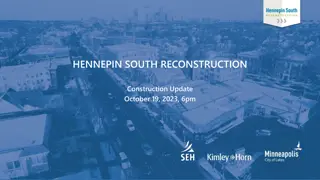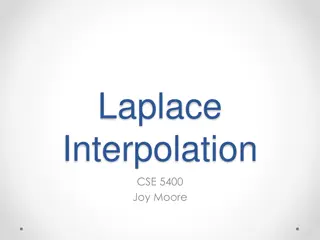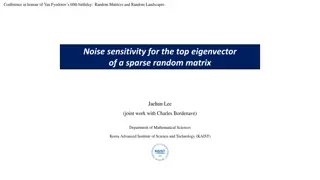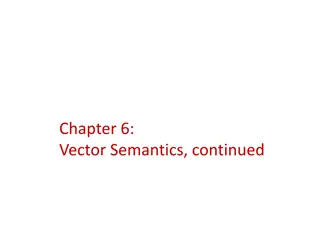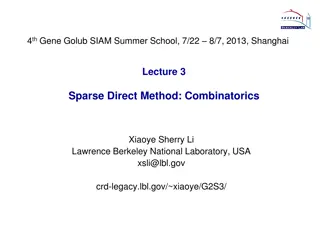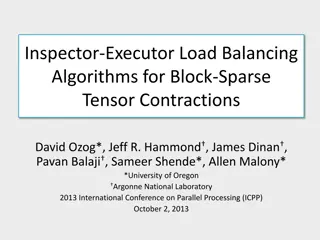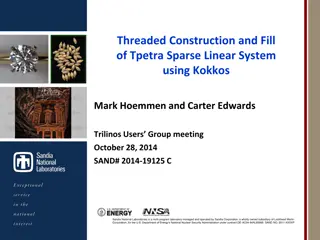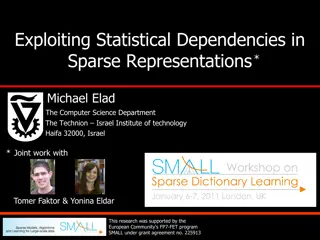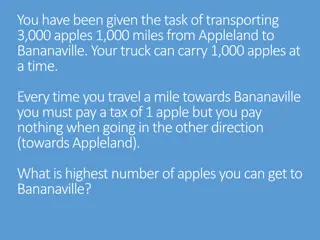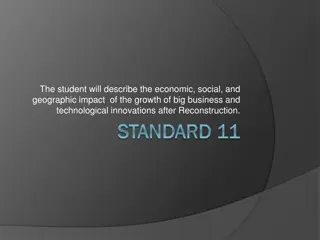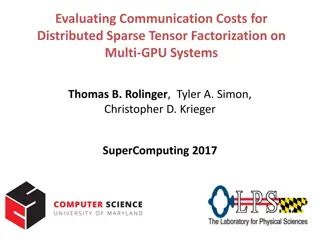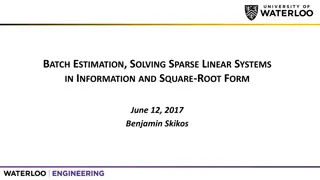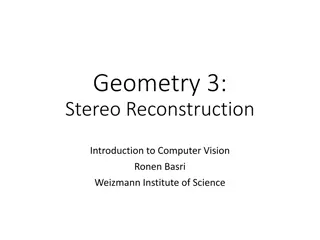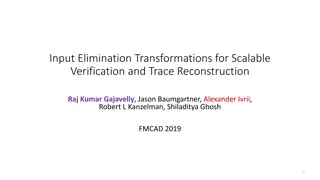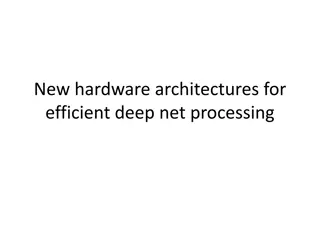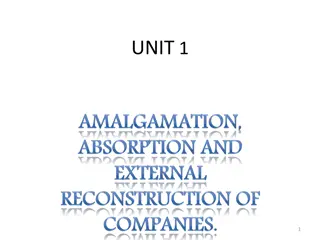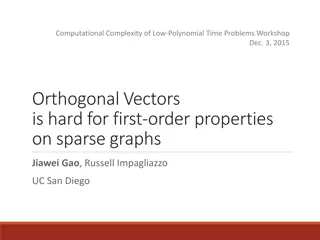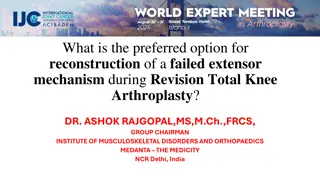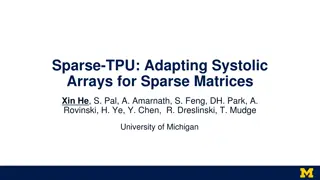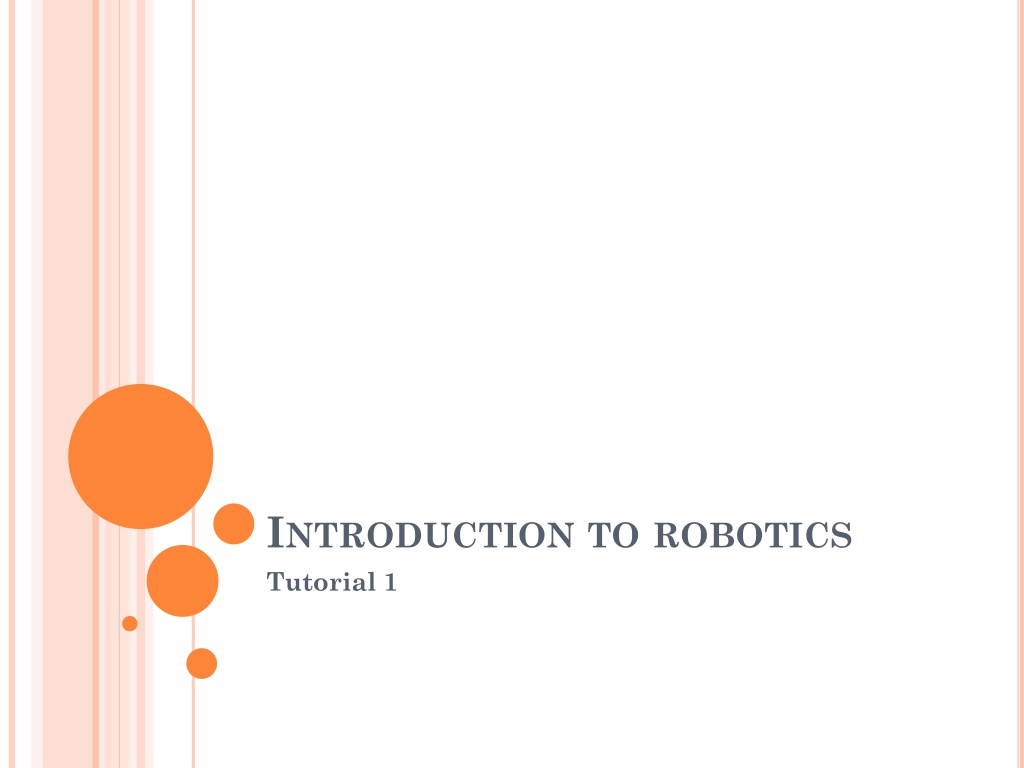
Introduction to Robotics Tutorial and MATLAB Basics
"Learn the fundamentals of robotics in this tutorial series, covering topics such as MATLAB basics, vector operations, elementary matrices, linear equations, and more. Engage with the Robotic Tool Box and get hands-on experience in robotics concepts and applications."
Download Presentation

Please find below an Image/Link to download the presentation.
The content on the website is provided AS IS for your information and personal use only. It may not be sold, licensed, or shared on other websites without obtaining consent from the author. Download presentation by click this link. If you encounter any issues during the download, it is possible that the publisher has removed the file from their server.
E N D
Presentation Transcript
INTRODUCTION TO ROBOTICS Tutorial 1
AGENDA Administrations Basic Matlab Robotic Tool Box Introduction to ROS
ADMINISTRATIONS 3 HWs, 10% each 30% total Midterm Exam (Will be held in the lecture), 30% Final Project, 40% There will be NO final exam
BASIC COMMANDS - VECTORS Row Vector >> a=[0.2,7,11,5] a = 0.2000 7.0000 11.0000 5.0000 Column Vector >> b=[0.2;7;11;5] b = 0.2000 7.0000 11.0000 5.0000
VECTORS - RULE Space or a comma to move a column. ; to move a row. >> A=[3 4 5; 4 7 9; 2 6 7] A = 3 4 5 4 7 9 2 6 7
OPERATOR RANGE - : >> 1:5 ans = 1 2 3 4 5 >> 1:3:5 ans = 1 4 >> 1:-3:-15 ans = 1 -2 -5 -8 -11 -14 >> x = 0:0.25:1 x = 0 0.2500 0.5000 0.7500 1.0000
INDEXES Note indexes in Matlab starts with 1, NOT 0 >> A=[3 4 5; 4 7 9; 2 6 7] A = 3 4 5 4 7 9 2 6 7 >> A(1:2,2:3) ans = 4 5 7 9 >> A(1,[1,3]) ans = 3 5
ELEMENTARY MATRICES >> A=ones(3,3) A = 1 1 1 1 1 1 1 1 1 >> B = eye(3) B = 1 0 0 0 1 0 0 0 1 >> C = zeros(3,5) C = 0 0 0 0 0 0 0 0 0 0 0 0 0 0 0
OPERATIONS ON DATA STRUCTURES >> A+B ans = 2 1 1 1 2 1 1 1 2 >> A*B % B is identity, therefore answer is A. ans = 1 1 1 1 1 1 1 1 1 >> A^2 % same as A*A ans = 3 3 3 3 3 3 3 3 3
SOLVING LINEAR EQUATIONS + = = 3 2 5 y 44 3 2 5 44 27 x x x x y 1 = = 1 x A b 27 1 2 x A b >> s = A\b s = 7 13
ROBOTIC TOOLBOX Website: http://petercorke.com/Robotics_Toolbox.html Installing instructions: Adjust your MATLABPATH to include rvctools (pathtool) Execute the startup file rvctools/startup_rvc.m Run the demo rtdemo to see what it can do Interesting examples Animations Inverse Kinematics Forward Dynamics http://www.youtube.com/watch?v=440-3LCZ_ow
ROBOTIC TOOLBOX We ll use the toolbox with the course. Tutorials will use the toolbox for examples Homework assignments will contain a wet part, you ll use the toolbox for the wet part. You ll need the toolbox for the final project.
ROS ROBOTIC OPERATING SYSTEM ROS is an open-source, meta-operating system for your robot It provides the services you would expect from an operating system: Hardware abstraction Low-level device control Implementation of commonly-used functionality Message-passing between processes Package management. Distributed System
ROS COMPATIBILITY ROS currently only runs on Unix-based platforms. Software for ROS is primarily tested on Ubuntu and Mac OS X systems While a port to Microsoft Windows for ROS is possible, it has not yet been fully explored.
ROS CONCEPTS ROS has three levels of concepts Filesystem level Computation Graph level Community level
FILESYSTEM Packages: Packages are the main unit for organizing software in ROS. A package may contain ROS runtime processes (nodes), a ROS- dependent library, datasets, configuration files, or anything else that is usefully organized together. Manifests: Manifests (manifest.xml) provide metadata about a package, including its license information and dependencies, as well as language-specific information such as compiler flags. Stacks: Stacks are collections of packages that provide aggregate functionality, such as a "navigation stack." Stacks are also how ROS software is released and have associated version numbers Stack Manifests: Stack manifests (stack.xml) provide data about a stack, including its license information and its dependencies on other stacks. Message (msg) types: Message descriptions, stored in my_package/msg/MyMessageType.msg, define the data structures for messages sent in ROS. Service (srv) types: Service descriptions, stored in my_package/srv/MyServiceType.srv, define the request and response data structures for services in ROS.
ROS COMPUTATION GRAPH LEVEL Nodes: Nodes are processes that perform computation. Master: The ROS Master provides name registration and lookup to the rest of the Computation Graph. Without the Master, nodes would not be able to find each other, exchange messages, or invoke services. Messages: Nodes communicate with each other by passing messages. A message is simply a data structure, comprising typed fields. Standard primitive types (integer, floating point, boolean, etc.) are supported, as are arrays of primitive types. Messages can include arbitrarily nested structures and arrays (much like C structs). Topics: Messages are routed via a transport system with publish / subscribe semantics. A node sends out a message by publishing it to a given topic. The topic is a name that is used to identify the content of the message. A node that is interested in a certain kind of data will subscribe to the appropriate topic. There may be multiple concurrent publishers and subscribers for a single topic, and a single node may publish and/or subscribe to multiple topics. In general, publishers and subscribers are not aware of each others' existence. The idea is to decouple the production of information from its consumption. Logically, one can think of a topic as a strongly typed message bus. Each bus has a name, and anyone can connect to the bus to send or receive messages as long as they are the right type. Services: The publish / subscribe model is a very flexible communication paradigm, but its many-to-many, one-way transport is not appropriate for request / reply interactions, which are often required in a distributed system. Request / reply is done via services, which are defined by a pair of message structures: one for the request and one for the reply. A providing node offers a service under a name and a client uses the service by sending the request message and awaiting the reply. ROS client libraries generally present this interaction to the programmer as if it were a remote procedure call. Bags: Bags are a format for saving and playing back ROS message data. Bags are an important mechanism for storing data, such as sensor data, that can be difficult to collect but is necessary for developing and testing algorithms.

